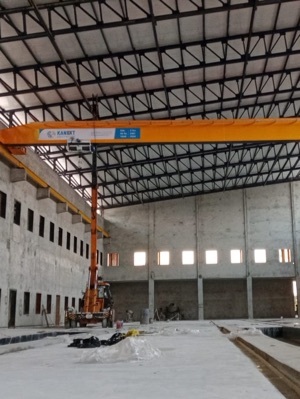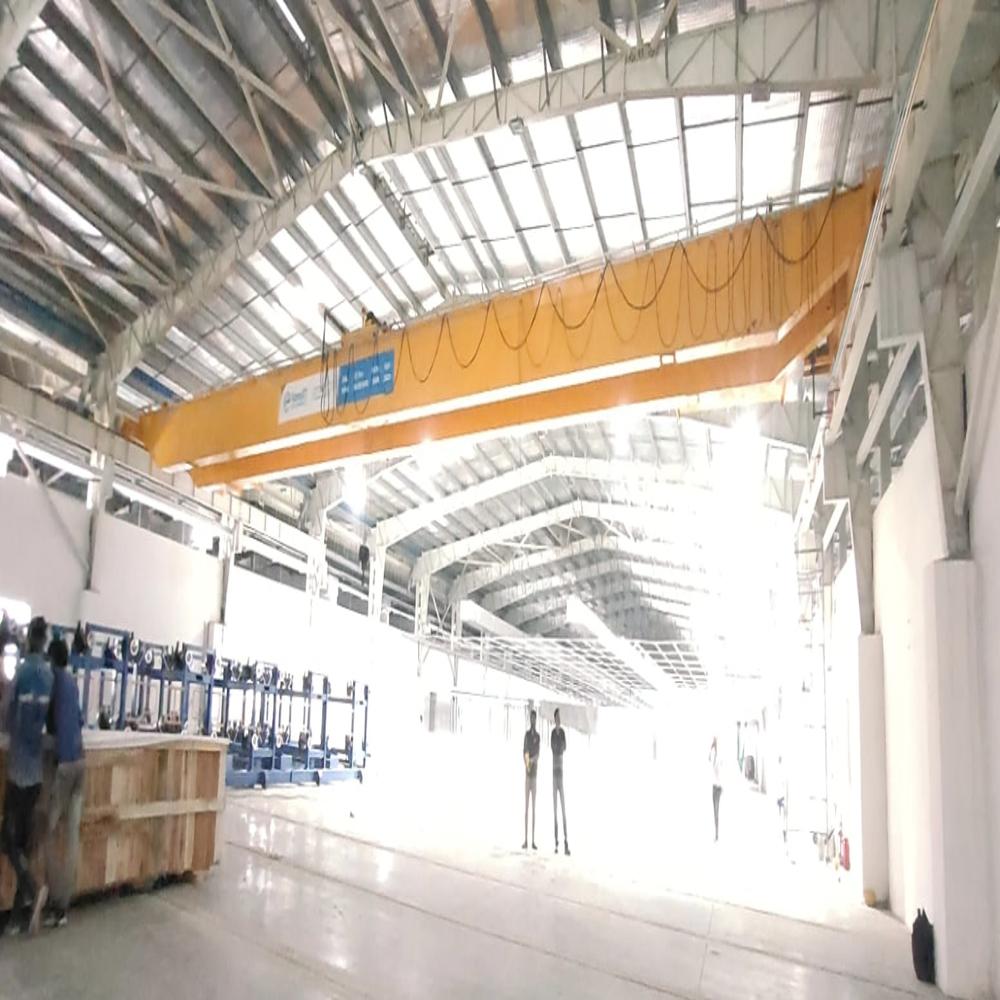Specification
- इमरजेंसी स्टॉप
- रंग
- GOLDEN YELLOW
- ट्रैवलिंग स्पीड
- एम/एम
- एप्लीकेशन
- ANY INDUSTRIES
- ब्रेक
- DISC BRAKE
- गियरबॉक्स
- HELICAL, HOLLOW, BEVAL
- उपयोग
- NEW
- शर्त
- लोड क्षमता
- मैट्रिक टन
- मैक्स। सामान उठाने की ऊंचाई
- मीटर (m)
- साइज
- 5-50
- ऊंचाई
- मीटर (m)
- मैक्स। लिफ्टिंग लोड
- मैट्रिक टन
- प्रॉडक्ट टाइप
- EOT CRANE
- स्पैन
- 10-60 MTR
- वज़न
- किलोग्राम (kg)
- लिफ्टिंग मैकेनिज्म
- ELECTRICAL operation
- चौड़ाई
- मीटर (m)
- लम्बाई
- मीटर (m)
- लिफ्टिंग स्पीड
- एम/एम
- ऑपरेटिंग मोड
- ELEECTRICAL
- बिजली की आपूर्ति
- 415
- वोल्टेज
- वाट (w)
Trade Information
- Minimum Order Quantity
- 1 Unit
- एफओबी पोर्ट
- MUNDRA PORT
- भुगतान की शर्तें
- , , , ,
- आपूर्ति की क्षमता
- प्रति महीने
- डिलीवरी का समय
- हफ़्ता
- नमूना उपलब्ध
- No
- पैकेजिंग का विवरण
- AS PER ORDER
- मुख्य निर्यात बाजार
- , , ,
- मुख्य घरेलू बाज़ार
- प्रमाणपत्र
- ISO 9001-2015
About
EOT (Electric Overhead Traveling) Cranes, often simply called Electric Overhead Cranes or Bridge Cranes, are a fundamental piece of equipment in countless industrial and commercial settings for lifting, lowering, and moving heavy materials.
Let's break down what makes them "Electric Overhead Traveling Cranes":
-
Electric: This signifies that all the movements of the crane are powered by electric motors. This includes:
-
Hoisting: The vertical movement of lifting and lowering the load.
-
Trolley Travel: The horizontal movement of the hoist along the bridge girder (crosswise to the runway).
-
Bridge Travel: The horizontal movement of the entire crane bridge along the length of the building (longitudinal to the runway).
-
-
Overhead: This refers to their operational position. EOT cranes are installed on elevated runways or rails, typically attached to the building's structural columns or a separate support structure. This allows them to operate above the workspace, keeping the floor clear for other activities, personnel, and equipment.
-
Traveling: This highlights their mobility within a defined area. The crane's bridge travels along the length of the building on its runways, and the hoist/trolley travels across the width of the bridge. This two-dimensional travel capability allows the crane to cover a large rectangular area, providing flexibility in material handling.
Key Components of an EOT Crane:
-
Bridge (or Bridge Girder): The main horizontal beam(s) that spans the width of the bay. It carries the trolley and hoist.
-
Single Girder: One main beam.
-
Double Girder: Two main beams.
-
-
End Carriages (or End Trucks): Located at each end of the bridge, these contain the wheels that travel along the runway rails.
-
Hoist: The mechanism that lifts and lowers the load. It consists of an electric motor, gearbox, drum (for wire rope), and the hook block.
-
Trolley: The assembly that houses the hoist and travels along the bridge girder.
-
Runway System: The parallel rails (and their supporting structure) mounted to the building, on which the entire crane travels.
-
Control Panel: Houses the electrical components, contactors, and protective devices for the crane's operation.
-
Controls: Can be pendant control (hanging from the crane), radio remote control, or sometimes cabin control for large cranes.
-
Safety Devices: Limit switches (for hoist and travel motions), overload protection, emergency stop buttons, anti-collision systems, brakes, etc.
Advantages of EOT Cranes:
-
Space Utilization: Frees up floor space by operating overhead.
-
Efficiency: Streamlines material handling, speeding up production and logistics.
-
Safety: Reduces manual handling risks and enhances workplace safety with various built-in features.
-
Versatility: Adaptable for a wide range of industries and applications, with customizable capacities and spans.
-
Precision: Offers accurate positioning of loads.
-
Durability: Built for heavy-duty, long-term operation.
EOT cranes are indispensable in industries such as manufacturing, steel mills, foundries, fabrication shops, warehouses, power plants, and many others where heavy and bulky materials need to be moved safely and efficiently.
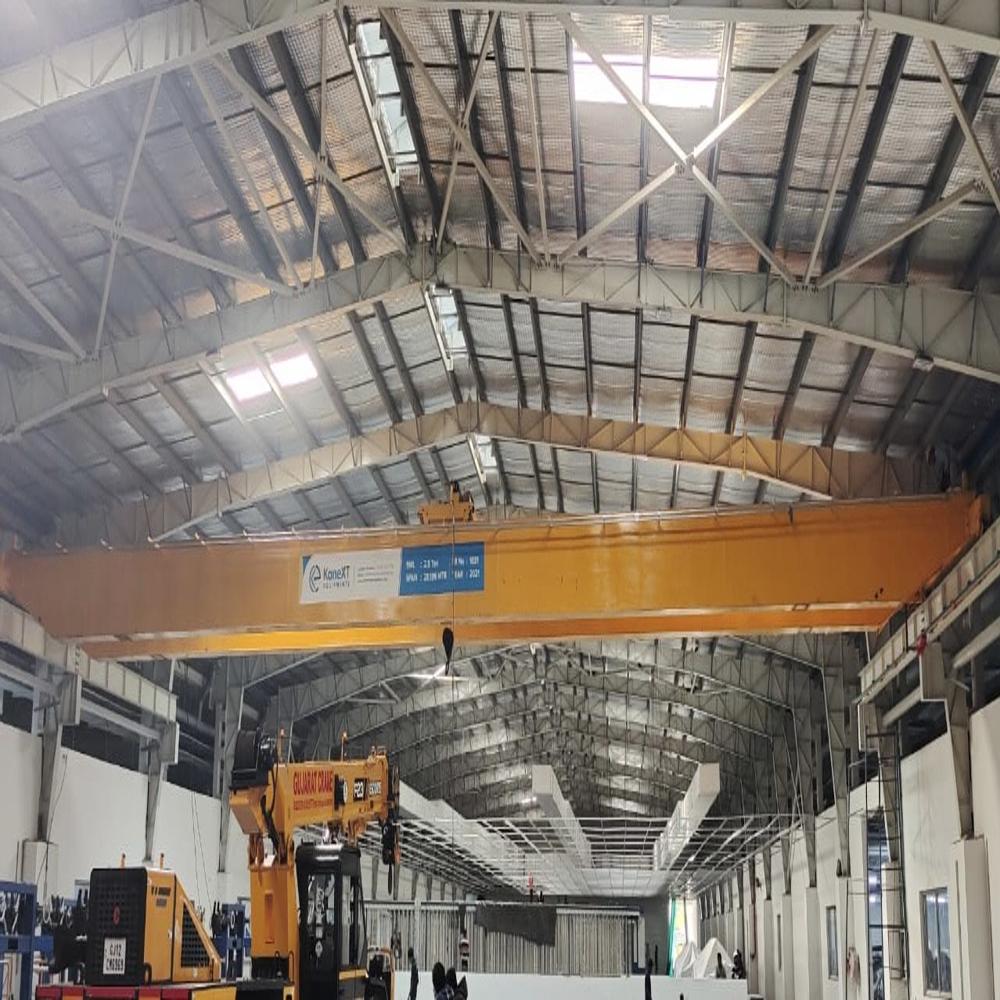
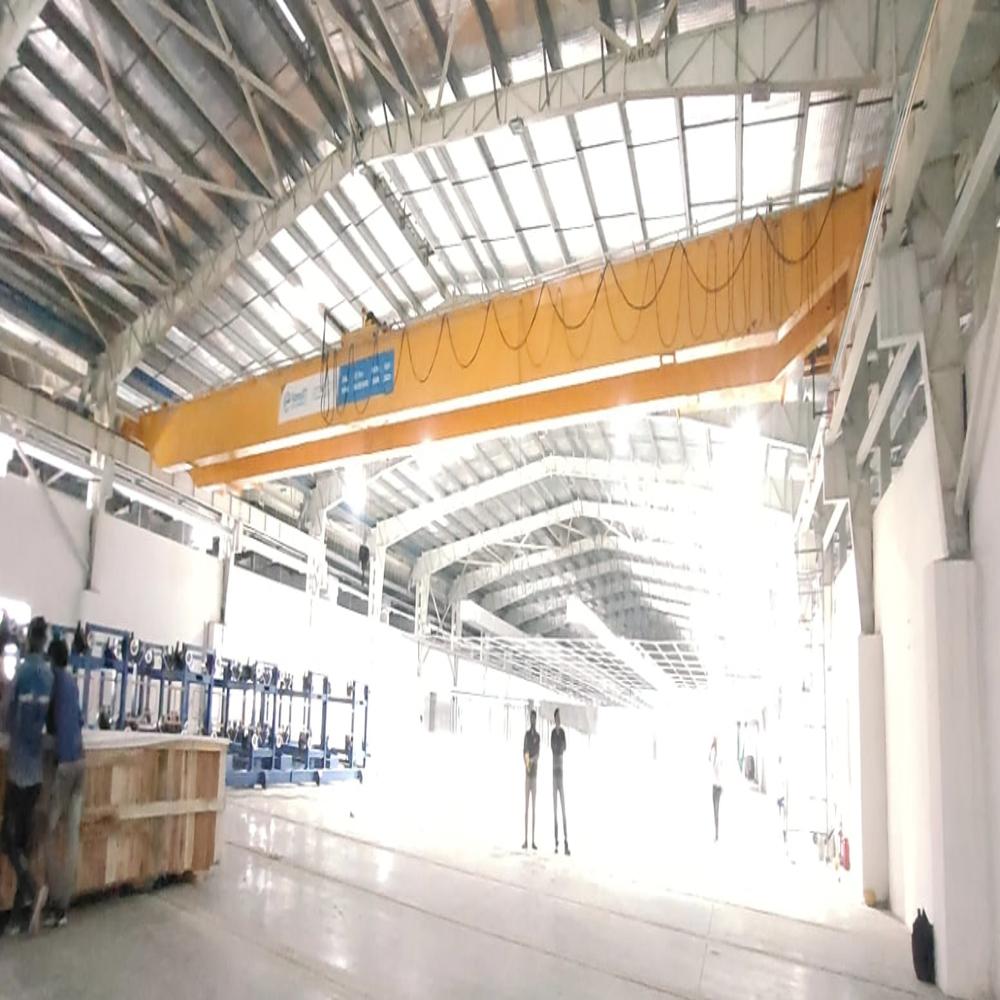

Price: Â
- 50
- 100
- 200
- 250
- 500
- 1000+
अधिक Products in ईओटी क्रेन Category
सिंगल गर्डर ईओटी क्रेन - सेफ वर्किंग लोड 500 से 25,000 किलो | गोल्डन येलो, इलेक्ट्रिक कंट्रोल, इमरजेंसी स्टॉप, 12 महीने की वारंटी
ऑपरेटिंग मोड : विद्युतीय
ब्रेक : डिस्क
वज़न : 5 किलोग्राम (kg)
मैक्स। सामान उठाने की ऊंचाई : 70 मीटर (m)
लिफ्टिंग मैकेनिज्म : हाँ
लिफ्टिंग स्पीड : 3.5 mpm मिमी/मी
डबल गर्डर ईओटी क्रेन - सुरक्षित कार्य भार 500 से 100,000 किलोग्राम | गोल्डन येलो, इलेक्ट्रिक कंट्रोल, इमरजेंसी स्टॉप, 12 महीने की वारंटी
ऑपरेटिंग मोड : विद्युतीय
ब्रेक : डिस्क
वज़न : 5000 किलोग्राम (kg)
मैक्स। सामान उठाने की ऊंचाई : 50 मीटर (m)
लिफ्टिंग मैकेनिज्म : विद्युतीय
लिफ्टिंग स्पीड : 4 मिमी/मी
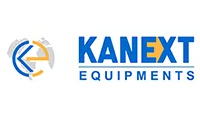
 English
English Spanish
Spanish French
French German
German Italian
Italian Chinese (Simplified)
Chinese (Simplified) Japanese
Japanese Korean
Korean Arabic
Arabic Portuguese
Portuguese
